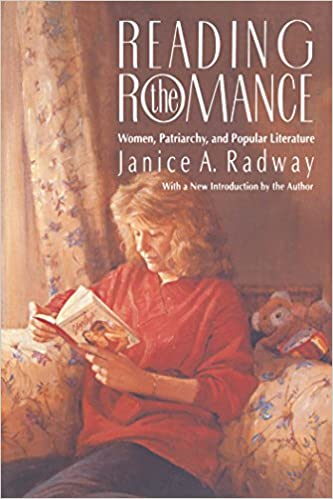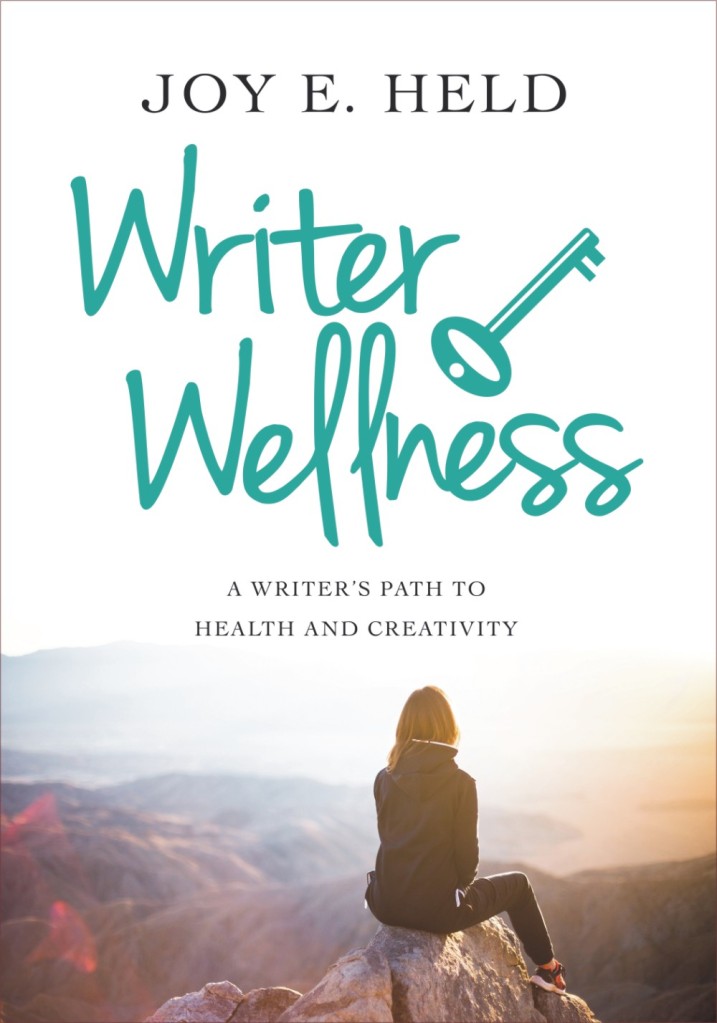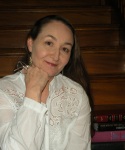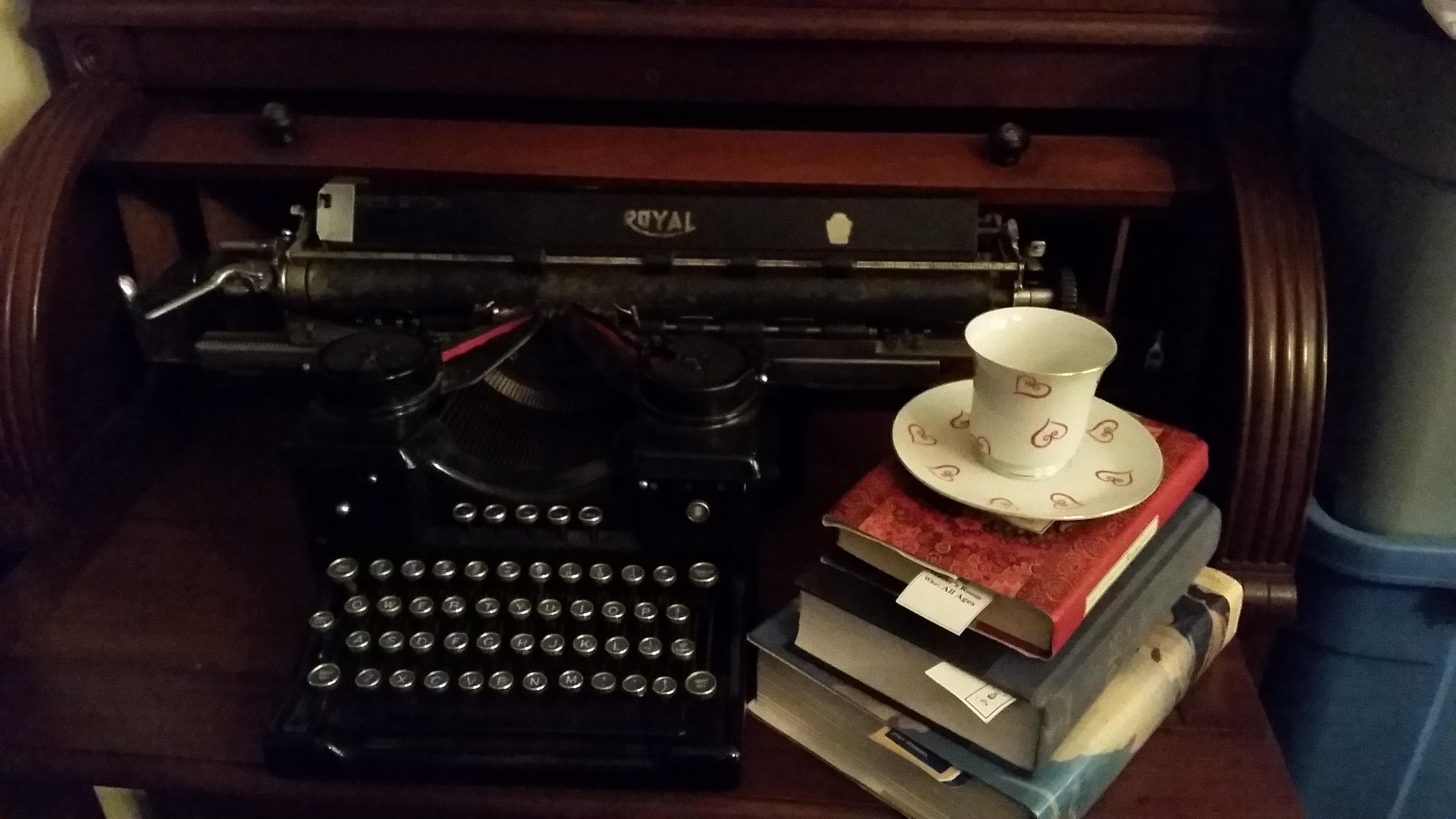
Writing in The Cambridge Companion to Popular Fiction, Fred Botting’s piece “Bestselling Fiction: Machinery, Economy, Excess” reminds me that there are two sides to a coin, and I understand that an individual can realistically only see one physical side at a time. When Botting invokes Janis A. Radway’s assertion that women read romantic fiction because of “…an underlying dissatisfaction” (164), I remember that the Radway study is one good source for understanding not only an academic perspective on the topic of why women read romance but for some of the history of my favorite genre.
Revisiting my copy of Reading the Romance: Women, Patriarchy, and Popular Literature by Radway, I was rewarded with a refreshing look at a historical perspective on the popularity of romantic fiction through the lens of how the publishing industry developed in America. Radway provides a thorough yet succinct review of books as a commercial commodity leading me, the reader, from the first printing press at Cambridge (America) in 1639 to how newspapers created a national hunger for serialized stories to the explosion of gothic romance novels in the early 1970s and how that set the stage for the contemporary world of publishing and reading romance.
What Radway reemphasized for me was the cold, hard truth that publishing is a business whose goal is to trade a relative product for the consumer’s money on a repetitive, reliable, and consistent basis. And that the romance novel industry led the way with particular publishers (i.e., Avon, Harlequin, etc.) intentionally seeking out emotionally stimulating content and consciously creating then delivering a targeted advertising campaign to a particular customer base: women. This foundational market took the bait, so to speak, beginning in the 1960s and have been the bedrock of the romance novel buying population ever since.
Radway’s chapter “The Institutional Matrix: Publishing Romantic Fiction” on the history of paperback publishing juxtaposed with the rise of romance reading actually allowed me to understand what Botting expressed in Cambridge Companion Chapter 9 about bestsellers and how the pulp novel industry led to the current state of affairs in popular genre fiction publishing.
Simply put, Radway’s history of publishing chapter (written several years before Botting in Cambridge Companion) culminates with claims that American women did and do devour large numbers of romance novels in order to repeat a specific type of reading experience, but that it isn’t sufficient to say that this is the only explanation for the popularity of the genre and the historically high sales. She makes it clear to me when she states, “The romance’s popularity must be tied closely to these important historical changes in the book publishing industry as a whole” (45).
Whether this ‘reading romance repetition habit’ is due to “an underlying dissatisfaction” with women’s position in the patriarchy as Radway and others propose, there is no definitive conclusion for me to glean except to say that the reading experience can’t be discounted and nor can the direct relationship to the industry at large.
In my opinion, the Cambridge Companion writers echo Radway. Botting ends with external forces-alteration, novelty, and desire-contributing to the production of bestsellers. Another contributor to CC, Erin Smith, wraps up her thoughts in a similar fashion by indicating that production, marketing, and consumption are king. Radway reiterates her accounting of romance novels as a point of consumerism by, what I see as a precursor of Botting and Smith, by claiming, “Commodities like mass-produced literary texts are selected, purchased, constructed, and used by real people with previously existing needs, desires, intentions, and interpretive strategies” (221).
They all agree that bestsellerism is mostly about marketing to consumer desire.
It’s evident to me from these three perspectives that the business of publishing is an important side of the coin. As a genre writer, I must keep a keen eye on it, but that I must also approach my work as marketable merchandise that will slake the buyer’s thirst but will also create a craving (dare I say addiction?) in the reader to return to take sip after sip after sip.
I believe my soon-to-be-released historical romance novel has the potential to quench readers’ thirst for unique historical settings and because I have two characters whose stories I plan to expand on for sequels, the possibility exists for repeat buyers. I’ve done a considerable amount of specific research on the American frontier in the late 1700s, but not everything I learned appears in the first book of the series. I have research and plot ideas in reserve to write at least two more books set in the same time period.
Considering that Radway and Botting point out as imperative the importance of marketing a novel to create long term reader relationships, the challenge for me will be finding historical events and or commemorations to “hook” my stories on to show a publisher that there is valid potential for interest in my themes and stories today and in the future.
All good things,
Joy
Works Cited
Botting, Fred. “Bestselling Fiction: Machinery, Economy, Excess.” The Cambridge Companion to Popular Literature, edited by David Glover and Scott McCracken, Cambridge University Press, 2012, pp. 159-174.
Radway, Janice A. Reading the Romance: Women, Patriarchy, and Popular Literature. Chapel Hill, NC: The University of North Carolina Press, 1991.





